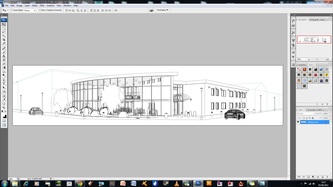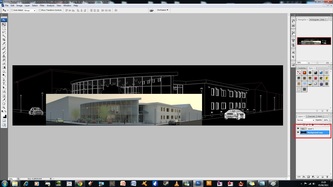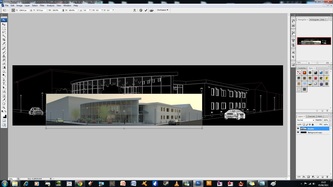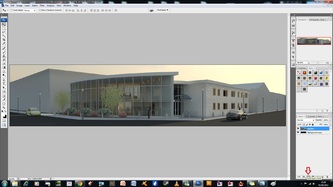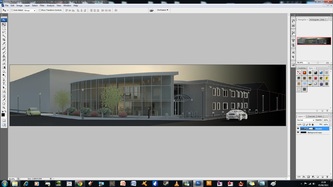- Home
- About
- Software
- Tutorials
- Google Sketchup Tutorials>
- Sketchup Hip Roof Technique
- Sketchup: Advanced Copy Tools
- Sketchup: Basic Animation Tecnique
- Sketchup: Scaffold Creation Tutorial
- Sketchup: Construction Sequence Animation Tutorial
- Sketchup : Lathe Technique - Follow Me Tool
- Sketchup - Cone Creation Tutorial
- Sketchup - Sphere Creation Tutorial
- Sketchup - Volumetric Diagram using 3D Text
- Tutorial - Sketchup to Kerkythea Clay Rendering Technique
- Header Image Creation Tutorial, Revit and Photoshop
- Adobe Illustrator Tutorial Series>
- Google Sketchup Tutorials>
- Your Thesis
- Portfolio Workshop
- Forum
- Blog
- Contact
Adobe Photoshop - You will never completely know it all...
Adobe Photoshop is the professional Image-editing, creation and manipulation standard. It has a massive inventory of tools and functions, of which a user is never likely to know/utilise all of. It is typically used for Site-template creation, image editing (ie. Airbrushing celebrities), digital artwork, architectural rendering, magazine formatting/editing, graphic design (logos, greeting cards, compliment slips etc.) and so on. It is one of the most useful tools to any computer literate designer, and can increase the quality of any presentation very quickly once utilised appropriately.
As previously stated, there are more tools in Photoshop than you are ever likely to require, therefore in order to show the speed and functionality of the software, I will give a very brief tutorial on how the above image was created using Revit and Photoshop.
As previously stated, there are more tools in Photoshop than you are ever likely to require, therefore in order to show the speed and functionality of the software, I will give a very brief tutorial on how the above image was created using Revit and Photoshop.
Mini-Photoshop Tutorial: How "Software" Header Image was Created
The benefit of this kind of image creation is it illustrates the relationship between the technical aspects of the design and the final product to the client, which typically increases the client confidence and faith in the design team, as they an visually see how the project will be created from the technical data they have been presented with. Very quick, and rather effective,, not to mention subtle and stylish.
Click Images to enlarge and see tutorial.



